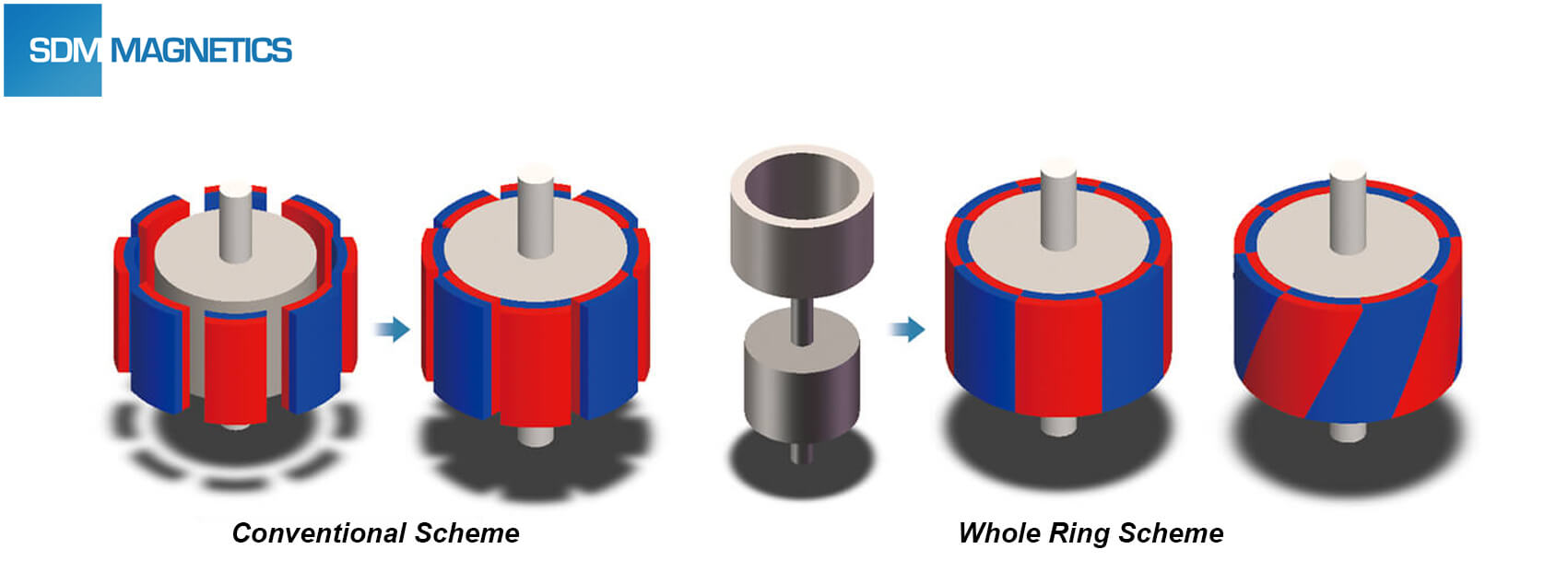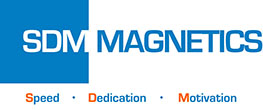Permanent magnet motors applied the permanent magnet as the excitation source. In addition to reducing power consumption, operational performance of the motor can be also enhanced. Permanent magnet motors utilize several kinds of permanent magnetic materials, including AlNiCo magnets, ferrite magnets, and rare earth permanent magnets. AlNiCo magnets were developed in 1930s and remarkable for high remanence, Curie temperature, thermal ability, and corrosion resistance. But AlNiCo magnets have the drawback of low coercivity and poor anti-demagnetization ability. With the advent of the rare earth permanent magnets, the market share of AlNiCo magnets declined sharply, then AlNiCo motor magnets are only utilized by tachogenerator nowadays.
Ferrite magnets were born in 1950s and still occupying a huge market share of permanent magnets at present. Besides superior cost advantage, corrosion resistance, and wide working temperature range, ferrite magnets are also not troubled by eddy current loss due to its high electric resistivity. Magnetic performance of ferrite magnets is relatively low, then ferrite motor magnets are mainly serving to low-cost motors which have the low requirement on volume and weight.
More than two-thirds of the rare earth permanent magnet are supplied to various permanent magnet motors. 1:5 type Sm-Co alloy, 2:17 type Sm-Co alloy, and Nd-Fe-B alloy are generally known as the first, second, and third generation of rare earth permanent magnets, respectively. Rare earth permanent magnets can be also classified to bonded magnets and sintered magnets in accordance with the production process. Bonded Neodymium motor magnets are basically in ring shape and praised for multi-pole magnetization, but it merely common in micro motors owing to magnetic performance limitations. Either sintered Samarium Cobalt magnets or sintered Neodymium magnets have low electrical resistivity, then both had to face the eddy current loss when used in high-speed motors. Eddy current loss may generate the temperature rise in the magnet, then give rise to irreversible demagnetization and further influence motor performance. Laminated magnets are a practical solution to find a balance between power and heat without changing magnet’s composition, motor’s structure, and performance.

It is undeniable that sintered Samarium Cobalt magnets are still playing an irreplaceable role on some specific motor applications even it always criticized by high cost and poor mechanical properties. The latest high performance Samarium Cobalt magnets and ultra-high temperature Samarium Cobalt magnets can provide these motors with more design freedom.

Neodymium motor magnets are normally having a certain requirement to the intrinsic coercivity. Intrinsic coercivity of sintered Neodymium magnets can be effectively improved by adding small amounts of heavy rare earth elements (HREE) Dy or Tb. In order to save HREE resource and cost, grain boundary diffusion (GBD) technology has been already applied to Neodymium motor magnet from the past years.

Conventional Neodymium motor magnets are mainly in segment or approximative shape, but multi-pole sintered ring magnets are a more desirable solution in comparison with splicing several segment magnets. Radially oriented ring magnets are the basis of the realization of multi-pole sintered ring magnets.

